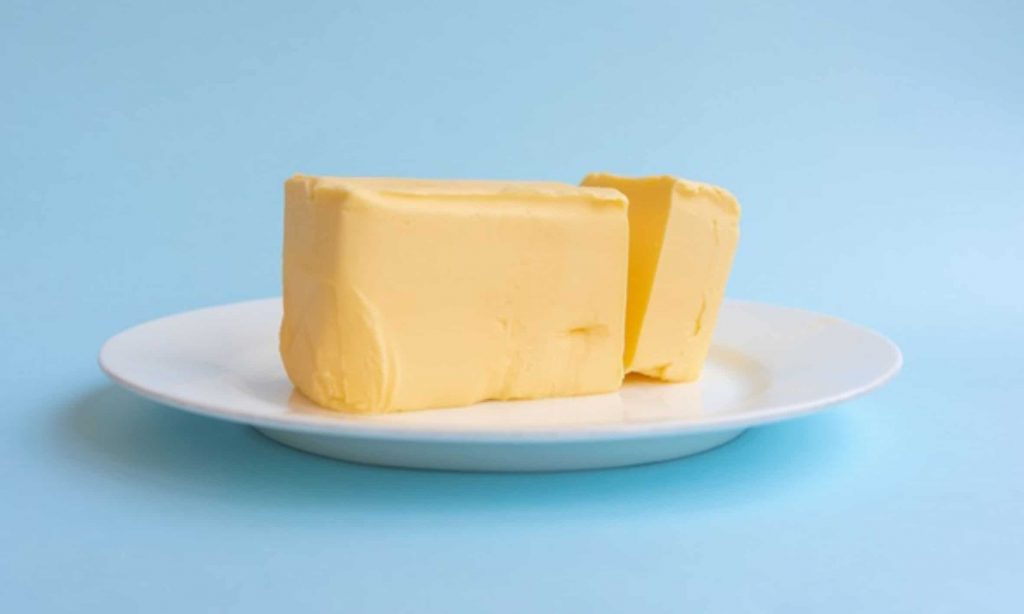
Cheddar block fell to $1.47 per pound on May 15 (the lowest price since June 9, 2021), climbed back to $1.54 on May 17, but closed May 19 at $1.535. This is up a half-cent on the week, ending seven weeks of decline, but is 84.5 cents below a year ago.
The barrels fell to $1.4425 on May 18 (the lowest since Sept. 7, 2021), but rallied to a May 19 finish at $1.47. This is 2 cents lower on the week, 87.75 cents below a year ago, and 6.5 cents below the blocks. Sales totaled 35 cars of block and 54 of barrel.
Cheese demand varies and the type of customer is part in the equation, says Dairy Market News. Cheesemakers who supply regional chain and individually owned restauranteurs say inflation has put pressure on those businesses. Retail cheesemakers are reporting generally steady demand, in some cases year-over-year improvements. Milk availability is a growing concern, particularly for handlers. Spot milk prices remain at previous levels, as low as $11 under Class at mid-week, compared to $2.50 under Class to 75 cents over a year ago.
Retail and food service cheese demand remains strong to steady in the West. Export demand is mixed. Some contacts indicate good demand from Asia, Mexico and South America, while others indicate lighter demand. Plentiful milk is keeping cheese production strong to steady, says Dairy Market News.
Cash butter closed May 19 at $2.46 per pound, up 6 cents on the week but 39 cents below a year ago, with nine sales put on the board this week.
Butter plants report atypical demand upticks as year-over-year reports are showing improvements in retail. Food service orders are seasonally in line to quieter. Cream is available for churning and multiples are at similar levels to previous weeks. Some are turning cream away, as they are at or near capacity.
Western cream is plentiful, but cream multiples moved higher this week. Planned equipment maintenance in June caused a few butter plants to reduce their cream intake. Some report output is limited due to personnel shortages. Retail and food service butter demand is strong to steady and export demand is steady.
Grade A nonfat dry milk fell to $1.1525 per pound on May 18 and stayed there. The price is the lowest since April 18, 1.75 cents lower on the week, and 64.75 cents below a year ago, with nine sales reported.
Dry whey closed 3.75 cents lower on the week, at 26.5 cents per pound. This is the lowest price since March 13, 2018, the second day whey started trading at the CME, and is 24.25 cents below a year ago. 75 loads were sold on the week, highest weekly total since the week of Sept. 30, 2019.
The U.S. Department of Agriculture lowered its 2023 milk production estimate in its latest World Agricultural Supply and Demand Estimates report, citing a larger expected cow inventory but slower output per cow. The report also gave a look at 2034.
2023 production and marketings were estimated at 228.6 and 227.6 billion pounds respectively, down 100 million pounds on production from a month ago, but unchanged on marketings. If realized, 2023 production would be up 2.1 billion pounds or 0.93 percent from 2022.
2024 production and marketings were estimated at 230.8 and 229.8 billion pounds respectively, up 2.2 billion pounds on both from 2023. If realized, 2024 production would be up 0.96 percent from 2023 and marketings would be up 0.97 percent.
Based on expected changes in component prices, 2023 Class III milk prices were lowered while Class IV prices were raised. The Class III average was projected at $17.75 per hundredweight, down 50 cents from last month’s estimate, and compares to $21.96 in 2022 and $17.08 in 2021. The 2024 average was projected at $17.50.
The 2023 Class IV average was estimated at $18.30, up 20 cents from a month ago, and compares to $24.47 in 2022 and $16.09 in 2021. The 2024 average is projected at $17.35.
The 2024 milk estimate was driven by gains in milk per cow and an additional milking day, according to the WASDE. The Class III price was forecast lower on weaker whey prices. The Class IV was forecast lower as well, with prices for butter and non-fat dry milk projected lower.
This month’s corn outlook is for larger production, greater domestic use and exports, and higher ending stocks. The corn crop was projected at a record 15.3 billion bushels, up more than 10 percent from last year on increases to both area and yield. The yield projection is 181.5 bushels per acre. With beginning stocks up slightly, total corn supplies were forecast at 16.7 billion bushels, the highest since 2017-18, according to the WASDE. Total U.S. corn use was forecast to rise about 5 percent relative to a year ago on higher domestic use and exports.
Corn exports were forecast to rise 325 million bushels to 2.1 billion, as lower prices support a sharp increase in global trade following the decline seen during 2022-23. The season-average farm price was projected at $4.80 per bushel, down $1.80 from 2022-23.
The soybean outlook is for higher supplies, crush, ending stocks, and lower exports. The soybean crop was projected at 4.51 billion bushels, up 5 percent from last year mainly on higher yields. With lower beginning stocks partly offsetting increased production, soybean supplies were forecast at 4.75 billion bushels, up 4 percent. The season-average soybean price was forecast at $12.10 per bushel compared with $14.20 in 2022-23. Soybean meal was forecast at $365 per short ton, down $90.
Meanwhile, U.S. corn planting was at 65 percent as of the week ending May 14, according to the USDA’s latest Crop Progress report. That’s up from 49 percent the previous week, 20 percent ahead of a year ago, and 6 percent ahead of the five-year average. Thirty percent was emerged, up from 12 percent the previous week, 17 percent ahead of the previous year, and 5 percent ahead of the five-year average.
Soybeans were at 49 percent planted, up from 35 percent the week before, 22 percent ahead of a year ago, and 13 percent ahead of the five-year average. Twenty percent are emerged, 12 percent ahead of a year ago and 9 percent ahead of the five-year average.
The week ending May 6 saw 57,100 dairy cows head to slaughter, down 1,700 from the previous week but 800 head or 1.4 percent more than a year ago. Year to date, 1.17 million head have been culled, up 51,300 or 4.5 percent above a year ago.
Checking demand, March butter disappearance totaled 219.5 million pounds, up 19.4 percent from February and 15.2 percent above March 2022. HighGround Dairy credits “substantial domestic demand, possibly due to an earlier Easter in 2023.”
The butter was a “beacon of hope,” said HighGround Dairy contributing dairy economist Betty Berning in the May 22 “Dairy Radio Now” broadcast.
Cheese totaled 1.23 billion pounds, down 1.7 percent from February and down 2.2 percent from a year ago. Both domestic use and exports were lower, falling 2.4 percent domestically and 0.4 percent on exports. American cheese exports plummeted 12 percent annually, and year-to-date were at a deficit of 4.3 percent to the same period in 2022.
Nonfat dry milk-skim milk powder utilization totaled 238.5 million pounds, up 25.1 percent from February and 1.4 percent ahead of a year ago. HighGround Dairy credited an uptick in domestic usage, which was up 13.7 percent, while exports declined 2.7 percent from 2022.
Dry whey totaled 79.7 million pounds, up 8.1 percent from February and 11.8 percent ahead of a year ago. Domestic usage, at 32.8 million pounds, was up 17.1 percent from a year ago, and exports, at 46.9 million, were up 8.3 percent.
Fluid milk sales looked a little better in March but were still down from a year ago. The latest data shows packaged fluid sales totaled 3.8 billion pounds, down just 0.7 percent from March 2022, following a 3.2 percent drop in February.
Conventional product sales totaled 3.5 billion pounds, down 0.9 percent from a year ago. Organic products, at 256 million pounds, were up 1.3 percent, and represented 6.8 percent of total sales for the month.
Whole milk sales totaled 1.3 billion pounds, up 2.1 percent from a year ago, up 1.1 percent year to date, and represented 34.3 percent of total milk sales for the three months.
Skim milk sales, at 192 million pounds, were down 6.2 percent from a year ago and down 6.8 percent year to date.
Total packaged fluid sales for the three months amounted to 10.9 billion pounds, down 1.4 percent from 2022. Conventional product sales totaled 10.2 billion pounds, down 1.6 percent. Organic products, at 732 million pounds, were up 1.1 percent, and represented 6.7 percent of total milk sales for the period.
The USDA announced the June Federal order Class I base milk price at $18.01 per hundredweight, down $1.56 from May, $7.86 below June 2022, and the lowest Class I since November 2021. It equates to $1.55 per gallon, down from $2.22 a year ago. The six month average stands at $19.77, down from $23.32 a year ago and compares to $16.13 in 2021.
Global Dairy Trade reversed two events of gain this week, as the GDT’s weighted average slipped 0.9 percent following gains of 2.5 percent on May 2 and 3.2 percent on April 18. Traders brought 47.5 million pounds of product to market, down from 51.3 million on May 2, and the lowest since Jun. 21, 2022. The average metric ton price slipped to $3,488 U.S., down from $3,506 on May 2.
Anhydrous milkfat led the declines, down 4.5 percent after losing 2.4 percent on May 2. Butter, on the other hand, was up 2.2 percent following a 2.4 percent advance. Cheddar showed the second biggest decline, down 3.4 percent, after rising 4.5 percent last time. Skim milk powder was down 1.6 percent after rising 1.5 percent, and whole milk powder was up 0.3 percent following a 5 percent gain on May 2.
StoneX says the GDT 80% butterfat butter price equates to $2.243 per pound U.S., up 5.4 cents after gaining 5.6 cents on May 2, and compares to May 19’s CME butter at $2.46. GDT cheddar, at $1.9991, was down 7 cents, and compares to May 19’s CME block cheddar at $1.535. GDT skim milk powder averaged $1.2547 per pound, down from $1.2641, and whole milk powder averaged $1.4715 per pound, up from $1.4650. CME powder closed at $1.1525.
Dairy margins deteriorated over the first half of May, particularly in nearby periods, as a sharp decline in milk prices more than offset steady to weaker projected feed costs, according to the latest Margin Watch from Chicago-based Commodity and Ingredient Hedging LLC.
“Spot trade in cheese and whey has been at a deep discount to indicative Class III milk futures which have adjusted lower as the cash market has failed to recover,” the Margin Watch reported. “Whey prices have dropped from almost 87 cents per pound early last year as increased production is forcing more trade to clear at the CME. Since the beginning of April, 229 loads have traded in the spot market. While exports have held up, weaker hog margins in China are causing a recent slowdown in demand which will force more product to clear domestically.”
“Exports of other dairy products during March were impressive as well, with 91.6 million pounds of cheese and curd exports which represented the second-highest March total on record, although total first quarter cheese exports were record high and first quarter nonfat dry milk exports were the second highest on record.”
“Unfortunately, lower prices may need to be maintained to move additional product through export channels as competition increases, particularly to Asia,” the Margin Watch warned. “Another problem for dairy producers is that ongoing issues with labor, freight and maintenance are reducing the capacity of dairy processors. Cooperatives and milk handlers have been forced to either dump or sell spot milk at deep discounts, with producers receiving pricing of $4 to $12 per cwt. below class for milk exceeding contracted volumes.”
Cooperatives Working Together members accepted 11 offers of export assistance this week on sales of 1.3 million pounds of American-type cheese, 44,000 pounds of butter, and 154,000 pounds of cream cheese. The product is going to customers in Asia, Central America, the Caribbean, Middle East-North Africa, Oceania and South America, through November.
In politics, the International Dairy Foods Association reports the Wall Street Journal says, “Top officials with the USDA remain fixated on banning chocolate milk from elementary and middle school cafeterias despite widespread opposition from parents, school meal professionals, and the federal government’s own Dietary Guidelines for Americans report.”
In April, 37 school milk processors representing more than 90 percent of the school milk volume in the United States jumped ahead of USDA’s proposed guidelines with the Healthy School Milk Commitment, a pledge to offer nutritious school milk options with no more than 10 grams of added sugar per 8 fluid ounce serving by the 2025-26 school year.
The Journal reports, “the issue has divided parents.” However, neither the Journal article nor USDA’s comments in the Journal feature thoughts from parents of school-aged children. In a Morning Consult poll of more than 500 parents with children in public schools conducted March 17-19, 90 percent of parents expressed agreement that non-fat or low-fat flavored milk should remain an option in public school meals. In October 2022, a similar poll found support among parents for low-fat flavored milk to be 84 percent, meaning support among voting parents with children in public schools continues to increase,” says IDFA.























